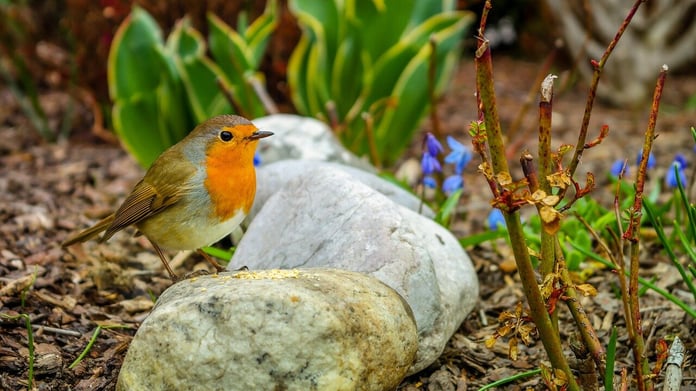There are numerous ways to know how to create a wildlife-friendly garden. From planting to upkeep, you will learn many things in this article that will help you make them as welcome as you can.
The animals can benefit from creating a wildlife-friendly yard. You may have lots of benefits, such as ensuring that they have access to a variety of habitats and providing for their well-stocked feeding grounds.
Here are the benefits of local species and some essential components for you to create a wildlife habitat in your backyard:

What are the benefits of local species
Local plant species help a variety of habitats, including other plants and trees, soil-dwelling microorganisms, and creatures like bees, butterflies, and birds. These animals and helpful insects, not only benefit the environment but also make you for them. But how do you create a wildlife-friendly garden? To know more, follow these tips.
How to create a wildlife-friendly garden
If you want to make a difference in your backyard, you need some ideas to help you achieve that goal, and we provide you with the easiest ways to do that. You can now create a wildlife habitat in your backyard at the cheapest cost.
Your garden needs many degrees of protection for the different creatures that live there. It appears more visually appealing. You will fill your fruit trees with blackberry, gooseberry, and redcurrant plants. Also, it will provide food for pollinators, including butterflies, bees, and hoverflies.
Make a water pond
A tiny pond in a wildlife-friendly yard is a terrific way to keep these creatures content. In the summer, when they are active, they might even draw dragonflies. However, make sure there are stones and branches within so that animals like frogs can enter and exit. It will stay oxygenated if water lilies are grown there.
Feed the birds
An easy way to increase bird appeal and create a wildlife-friendly garden is to install a seed feeder. You can turn an old bottle into a bird feeder. When you are feeding the birds, remember to clean them frequently.
Helping the wild animals in your yard
There are some tips to help you create a wildlife habitat in your backyard even when you’re not at home.
- A bottom hole in your fence will allow animals like hedgehogs and frogs to get through your garden.
- Lowering or eliminating artificial explanation from your lawn and the area around your property, can also aid bats.
- To make it easier for them to enter, work with your neighbours to create a hedgehog hole, which is a crack in garden-separating walls and fences.

Create lawns that are butterfly-friendly
Like most other pollinators, adult butterflies and moths will consume the nectar of practically any bloom, but their larvae are picky and may only eat one or two plant types. For instance, buckthorn bushes are the only place where brimstone butterflies will feed and lay their eggs.
Build an insect hotel
To create a wildlife garden, build insect hotels with your children, or create a pile of rocks and decaying wood that will suffice. Place piles of rocks, bricks, logs, twigs, and leaves in a calm place. After that, keep quiet. Important insects like beetles and spiders will make this their home.
Assemble your sticks
Create wood and stick piles under bushes and around garden edges. Grow ivy or scatter earth sods over the surface for humidity. Stumperies—vertical, partially buried logs—are ideal for ferns and insects like woodlice in shaded locations.
Establish a garden glade
Plant successions of woodland flowers under trees, such as bluebells and foxgloves. This is a good way to create a wildlife-friendly garden and provide cover for animals like frogs and slow worms. Mow in the late summer and cover with leaf mould.
Maximize the use of compost
You can create a wildlife-friendly garden, and composting kitchen waste in your garden is an excellent way to reduce waste going to landfill. Small invertebrates like millipedes, woodlice, and spiders will benefit from the wildlife-friendly yard. These are excellent sources of food for other wildlife.
Worms help to create compost out of leaves and other organic material and will likely wriggle their way into your compost heap. Spreading homemade compost in your garden will encourage worms wherever it goes. Worms improve soil drainage and transfer nutrients to the surface.
Summary
No matter how much space they have, everyone can create a wildlife-friendly garden, whether they are taking care of an existing garden or starting fresh.
You can contribute to the creation of a wildlife-friendly yard with simple steps. They may require access to fruit trees, vegetation, grass, and water. When you create an insect hotel or a garden glade, start enlisting the aid of your neighbours to create a wildlife garden.



